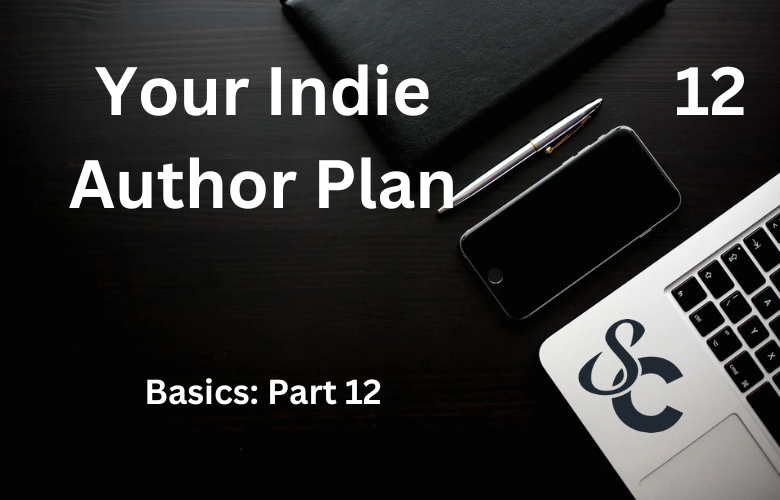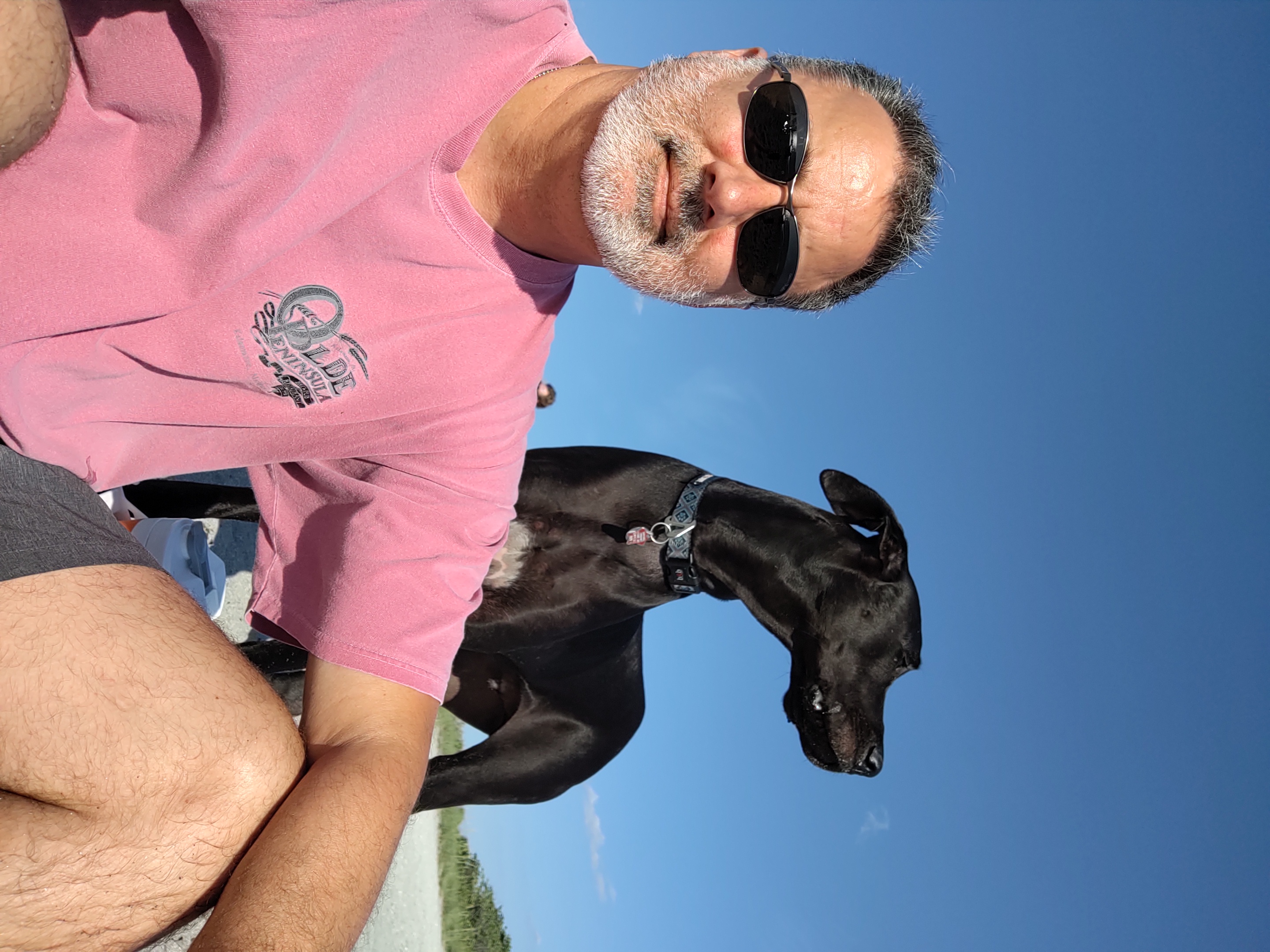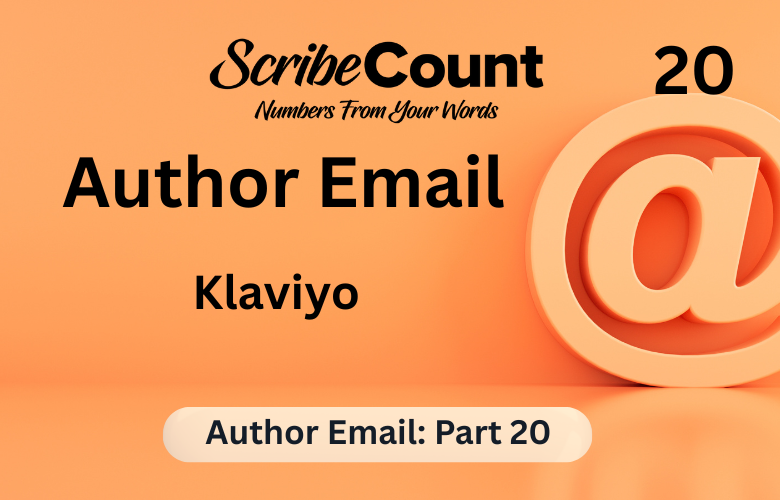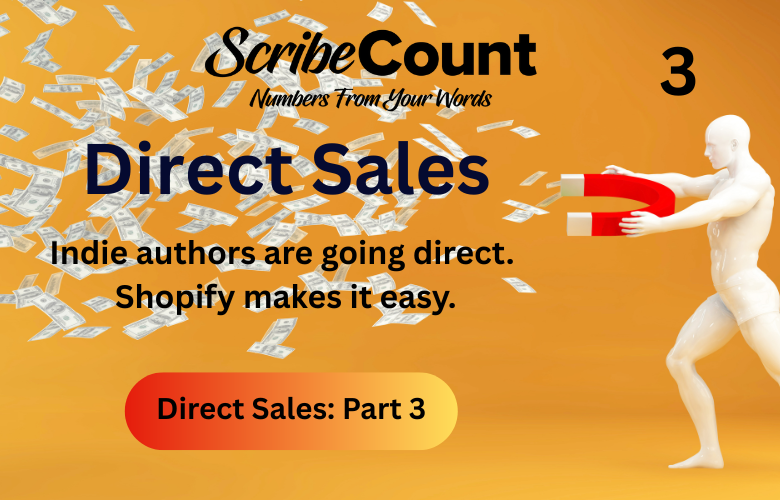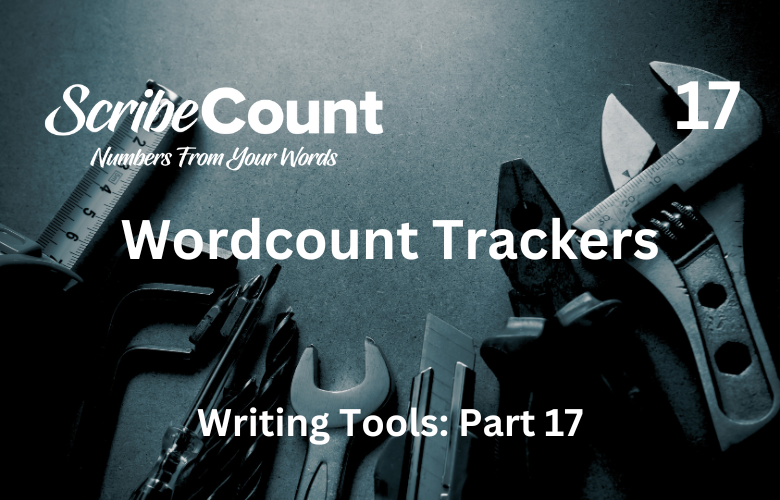What’s Your Indie Author Plan?
Is this a hobby, or a business?
This goes back to the first question; Why are you writing?
Is writing something you simply enjoy doing? Does it satisfy your inner need to be creative? Is the income it may or may not bring irrelevant to your standard of living? Do you view it as a fun hobby with the bonus of a few extra dollars in your pocket a month? Would you continue to write even if you made no money at all? Would you continue to write if you made enough to retire tomorrow?
OR
Is writing something you have dreamed of doing full-time since you first picked up a book? Does the lifestyle and freedom it provides strongly beckon you? Does the muse constantly fill your head with ideas that you need to release onto the page? Does making a living from writing fit your vision of a perfect life?
Deciding if writing is to remain a hobby or become your full-time occupation is the first decision. This article is geared toward the latter; the writer who wishes to make their hobby into a full-time business.
If that person is you, it’s time to build a foundation that will help guarantee you a successful career. Think of this as the base of your self-publishing pyramid, you want it to be solid so it can handle whatever challenges you may stack upon it as your business and library grow.
There are several terms that one might use to describe this: Infrastructure. Groundwork. Footing. Underpinning. Regardless of what term is used, they all support the same idea: Having the proper structures in place is essential to building a successful business. And have no doubt, if you are launching a career as a writer, building a business is what you are doing.
Like any other business, self-publishing requires a business plan.
You might be thinking that you’ll write a few books first and see how things work out and that this business stuff can wait for later. That too is a plan, a plan to fail.
“If you fail to plan, you are planning to fail” - Benjamin Franklin
Nobody starts a business with the intention of it failing, they plan to succeed and your publishing business should be no different. Planning to succeed involves having some things in place before they are needed. This is where the nuts and bolts of building a business come into play, and while they are not as fun as crafting a story, they are necessary to build a successful writing career. Without a business plan, even a simple one, your chances of success are severely diminished.
As CEO of your author business, you will wear many hats. You are not only the writer but also the editor, marketer, publicist, accountant, supply clerk, bookkeeper, proofreader, cheerleader, and barista. In this article, we’re going to talk about you the CEO. The person who owns and runs their publishing business.
NOTE: Starting a business involves a lot of moving parts. There are legalities to navigate, financial processes to set in place, tax and business models to consider, and a bit of government red tape to cut through. We will talk you through this step-by-step process in the Starting a Publishing Company section. This article covers decisions you’ll need to make before venturing there.
Before we start drawing blueprints, let's talk about the natural progression of the Indie Author. The following is an example and does not apply to everyone, we offer it here to outline the path that many authors have taken on their indie author journey.
Phase One: The Starter Kit
Amazon (eBooks and Paperbacks)
A basic Author Website
A Mailing List/Newsletter
A FaceBook page
Sole Proprietorship
Amazon
Most Indie Authors who are just starting out do so at Amazon. It’s been the natural progression for Indies for years and there are good reasons for that.
Self-publishing originated there in 2007.
It’s by far the most lucrative platform for the majority of indie authors.
Its publishing platform is simple to understand and use, and it offers perks to new authors.
In short, it’s an excellent starting platform and an ideal learning space. Many authors choose to publish exclusively with Amazon and its Kindle Unlimited platform until they have built an audience.
We discuss the act of publishing on Amazon in the Publishing on Amazon section.
Author Websites
A basic author website can be made for low cost and serves primarily two purposes:
It’s a place to connect with your readers, one that you control.
It’s a place to collect email addresses (AKA, your mailing list).
A basic website can consist of little more than a headshot, logo, list of your books, an “About Me” section, and, most importantly, a newsletter signup portal.
We discuss the many parts of an author's website in the Author Website section.
A Mailing List
A mailing list is essential because it provides a direct communication channel to reach your readers. By having this direct connection you can share targeted information, allowing you to build relationships, keep them updated on new releases or works-in-progress, and ultimately drive sales by sending personalized messages to people who have actively expressed interest in your books. Your mailing list will become your most powerful marketing tool, one that nurtures leads and fosters customer loyalty over time. It's essential to begin building that list on day one.
We discuss the best way to set up and leverage an author mailing list in the Marketing section.
An Author FaceBook Page
FaceBook has over 3 billion active users. It’s the largest social media platform in the world and allows indie authors to effectively reach a large number of potential readers. By posting consistently, authors can build a community around their work, directly connect with potential readers, promote their books, share updates and news, and ultimately grow their author brand by establishing an accessible online presence where they can engage with readers and fellow authors.
We discuss FaceBook and how authors leverage the platform in the Social Media section.
Sole Proprietorship
This is the minimum business model that an indie author can operate under. The setup costs are low, and the red tape is minimal. (Although it varies by state, the Sole Proprietorship is usually cost-effective up until the author earns more than $50,000/year. More about the advantages of a Sole Proprietorship and LLCs in the Business section)
This “Starter kit” is not set in stone, it is simply what’s viewed as the minimum requirements for launching a successful writing career. This kit will lay a solid foundation, allow you to both publish and learn, provide portals to reach your potential readers, and do so at a minimal cost.
Phase Two: Going WIDE.
The Five Major Sales Platforms
Print in all formats
Audiobooks
BookFunnel and/or StoryOrigin
MORE Social Media
Limited Liability Company (S-Corp)
The Five Major Platforms
In Phase 2 the indie author has left Amazon Exclusivity and is now publishing their books on several platforms. The five majors are Amazon, Kobo, Apple, Google, and Barnes & Noble. They can reach these platforms directly or utilize an aggregator such as Draft2Digital to do so for them. More on aggregators in another post.
Print in all formats
While Amazon offers some print options, Phase 2 authors have moved outside of Amazon to print services that offer more opportunities. Jacketed hardcovers, mass-market paperbacks, and special-issue books are now available through a variety of services. Ingram, Lulu, and BookVault are popular options for print.
Audio
Phase 2 authors now have the income from their books to reinvest into audiobook production. These may utilize a human narrator or the lower-cost AI option. This provides them with another income source from existing content. Findaway Voices and Authors Republic are popular audiobook aggregators.
BookFunnel and/or StoryOrigin
BookFunnel and StoryOrigin are services that offer a variety of marketing tools, chief among them is the Newsletter Swap. Once an author has garnered a healthy number of email addresses they can leverage that list by cross-promoting similar books to their readers in exchange for another author doing the same. Both services are low-cost and allow the author to increase their reach with little expense.
MORE Social Media
While Facebook is the best place to start, there are multiple other platforms such as TikTok, Instagram, and Pinterest that indie authors can leverage to promote their books and connect with readers. It's advised that authors tackle one platform at a time and become proficient at it before assigning a share of their marketing budget. Many authors find the platform their audience prefers and focus their efforts there while others adopt a broader approach and spread their marketing efforts around evenly. There is no single right way to do social media marketing, there are however countless ways to do it wrong, and what works for one author will not necessarily work for another. We look deeper into each social media platform in the Marketing Module.
Limited Liability Company
Although it varies by state the author should consider converting their existing Sole Proprietorship to a Limited Liability Company. More on the reasons why in the Business module.
Phase 3: Branching Out
Multiple Series/Genres
Subscriptions
Merchandise
Co-Authoring
Multiple Series/Genres
Market data tells us that the six-book series is the best income-producing structure for indie authors. By phase 3 the author will want to have a healthy backlist of books and a tested and productive marketing plan to promote them. Multiple series have proven to be the best way to achieve this. Authors may wish to explore related genres or even start additional pen names to write in new ones. Most successful authors “stay in their lane” to capitalize on what has worked best for them as far as income and then cater to their reader base.
Subscriptions
Adding a subscription feature to their website allows authors another way to directly connect with a dedicated fanbase, generate recurring income, and reach new readers by offering exclusive content, early access to new work, and behind-the-scenes insights. This content can be in the form of serialized stories, bonus chapters, character backstories, or an inside look at the author's writing process. All of which should be insights that are not available elsewhere.
While a subscription feature can foster a deeper relationship with the author's audience, it does come at considerable expense in both time and money. Every author will have to weigh the cost/benefit of a subscription. Authors with a substantial backlist can make a subscription quite lucrative.
Subscription-based models can function via platforms such as Patreon and Substack, through select WordPress plugins.
Merchandise
Having a line of merchandise can work to boost the author's brand, create connections with their readers, generate additional income, provide cross-selling opportunities, and give the reader a way to support their favorite author. Merch can be used in marketing campaigns and as giveaways at in-person meet and greets. Both WooCommerce and Shopify offer seamless integration with many online merchandise stores. Custom items can be printed/produced and drop shipped without the author needing to do anything. Printful is a popular merchandise service that indies use.
Co-Authoring
Many authors discover peers who write similar work while doing newsletter swaps. This can often lead to them working on books together and splitting the profits. One proven method is to have their two main characters team up for a joint adventure. That book then becomes a great marketing tool for both of their libraries.
Tracking the royalties of a co-authored book can be a challenge. To meet that need ScribeCount offers a Royalty Split feature that will divide the income according to whatever percentages the authors have agreed to.
Phase 4: Direct Sales
Selling Direct
Patreon/Kickstarter
Publishing others’ work
Speaking/Lecturing
Selling Direct
Direct Sales have been the dream of indie authors for years, but only in the last few years have all the needed pieces fallen into place. Direct Sales is simply authors selling their books themselves through their own online store rather than reaching the reader through a retailer such as Amazon. They essentially become fully established e-commerce platforms.
The advantages are many. Authors retain complete control over price, marketing, and the entire sales process. They also pocket the 30% fee that the sales platforms take while building a direct connection with their readers. Direct Sales were the fastest-growing sales channel for Indie Authors in 2024.
But like everything else, there’s a degree of work involved.
Selling Direct involves the integration of a sales platform such as Shopify or WooCommerce, an email marketing system such as Klaviyo, payment processors such as Stripe and PayPal, printing companies such as BookVault and Lulu, and a delivery service such as Bookfunnel.
Once combined on the author's website, the author will then have the ability to sell their books (in all formats), merchandise, and anything else they wish, directly to their readers.
The hardest part about Direct Sales is setting up the integrations, and then maintaining the store through regular updates by the many service providers. Once the store is set up, however, most authors enjoy a new and productive sales channel. One that often becomes their top performer.
The subject of Direct Sales is too vast to go into here. The key requirements are a healthy backlist and a large email following. If the author has those then it may be time to move forward on selling direct. We talk more in-depth about Selling Direct in this post.
Patron/Kickstarter
Authors utilize Kickstarter to fund their works-in-progress by engaging directly with their readers and pre-selling copies of the book. They can include expenses for editing, formatting, cover art, and marketing in the campaign itself and then write free of any concerns as to how they will pay for all the production costs.
A Kickstarter campaign can also serve as a way to gauge market interest. (Brandon Sanderson started a Kickstarter with the goal of raising $1 million dollars. It ended up with over 185,000 backers pledging close to $42 million dollars. While most authors can only dream of numbers that big several have made Kickstarter a staple of their business. Like selling direct, the key is to have a large backlist and an equally large mailing list. Direct engagement with the readers is the foundation, and most authors offer an exclusive reward to those who back them.
Publishing Other Authors Work
Many authors discover peers in social media groups or conferences that have books they wish to publish but lack the time or skills necessary to do so. To get their books out there they are willing to give away a percentage or pay a flat fee for an experienced author, one who has their publishing company up and running smoothly, to publish for them.
This essentially moves the author from being the CEO of a single-author company to one heading a multi-author company.
While this sounds appealing, the author/CEO must keep in mind that they must wear all of the hats connected to that publication. This will require time and/or the assistance of others to do well. Each CEO will need to weigh the cost/benefit of adding these additional titles to their business.
Speaking/Lecturing
Once you’ve reached a certain level of success, everyone starts asking questions. They want to know how you did so and what they can do to emulate your success. You may do one aspect of the publishing process very well and be approached by conferences to speak about it. You may get invited to appear on podcasts or be asked to write guest posts on blogs.
This is hard to refuse. After all, it feeds the ego. But does it sell books? Answer: Sometimes.
Authors like listening to podcasts. They can do so while doing other things and there’s usually something to learn in each of them. You might listen to hear a writer talk about the genre you both write in and gain some benefit from their market research. You might listen to hear about a service you’ve been thinking about trying. This is a time saver and well worth it.
Appearing on a podcast is different. Their purpose is to gain a following by providing information that people want to hear. If you have a non-fiction book or offer a service the audience might need, the podcast can convert to sales. If you are on just to chat about a common topic, not so much.
Most podcasts are not paying gigs. However, some schools and libraries have budgets for guest speakers and would happily book you to speak about your self-publishing journey.
Your results may vary.
These four phases I have listed here are not set in stone; successful authors have arrived where they are in a variety of ways. Some make six figures without leaving phase one, while others skip ahead to arrive at phase four within a year. It all hinges on your talent as a writer, your business acumen, your technical skills, and your marketing savvy. We offer these phases to educate the new indie authors on the possible paths before them.
Your Business Plan
Most business plans are a compilation of smaller plans. Self-publishing is no different. While they vary greatly, for our purposes here we’ll keep it simple and use a three-part plan.
A Production Plan
A Marketing Plan
A Learning Plan
Production Plan
Words on the page. As we’ve said many times already, you can’t sell a book that isn’t written. Words come first. That requires a writing schedule, one with clearly defined goals that are non-negotiable (even with yourself).
I’ll use myself as an example. Since I have ScribeCount to run, along with other business ventures, I need to divide my time accordingly while still reaching my daily and weekly production goals.
Here are my goals for Production:
15k words a week (minimum).
2 Blog posts/Articles a week (3-4k words each)
To reach those goals I stick to this schedule Monday through Friday:
6:30 Get Up/Walk Dogs I
7:00 Cardio: Bike Ride/2-mile run/5k walk w/Podcast
8:00 Walk Dogs II
9:00 Meal 1/Personal Email/News.
9:30 WIP – 2,000 words minimum
12:00 Meal 2
12:30 WIP- 1,000 words minimum
2:00 Gym, Walk Dogs III
3:00 Meal 3
3:15 Business:
Meetings / Email
Social Media / Email Marketing
Stats / Development
ScribeCount issues
Blog Posts
5:00 Read/Research
6:00 Meal 4
9:00 Meal 5. Walk Dogs IV.
11:00 Bed
Some explanation is in order:
I have a 200lb Great Dane named Henry who requires regular activity. I also have adopted a five-small-meals-a-day diet as writing has made me fat. My wife usually arrives home around 5 or 6 and I like to tell her I’ve been reading all day when she finds me in my Lay-Z-Boy. I skip the cardio and gym on Wednesday, allowing some extra time for words when needed. I use an app to track my writing output and if I fall behind I make it up on the weekends. No exceptions.
The key takeaways here are the 3,000 words per day minimum, the writing-comes-before-business schedule, and that I have dedicated time set every day for production, marketing, and learning.
This schedule results in 15k+ words, five podcasts listened to, 2 blog posts, and at least one book read, per week. Those blog posts are usually outlined while I eat and then written during business time or sometimes late at night if the mood strikes. When a book hits the finish line this schedule morphs into one that pushes that book to publication. If I’ve planned everything right this period is short and I’m soon back into my normal production schedule.
This schedule works for ME, and I am militant about sticking to it. The phone is off, the dogs know not to bother me. I even ignore people at the door (Henry answers it for me). Each author will have to find their own schedule that works for them.
Marketing Plan
Without a Marketing Plan, your book is destined to be lost in the vast ocean of books that get published every year. Approximately 7,500 new eBooks are published every day at Amazon’s KDP alone. This translates to around 225,000 eBooks a month, or about 2.7 million eBooks annually.
No one will buy a book they have never heard of. A marketing plan is a necessary part of self-publishing.
A good marketing plan has strategies to promote your book before, during, and after its publication. As an author, you will need to know what kind of readers will be interested in your book, where they can be found, and what type of campaigns you can deploy to reach them.
To be properly prepared to market you’ll need to answer a few questions first:
- What is your budget?
- Who is your audience?
- Who is your competition?
The first is self-explanatory. While there are ways to market your book for free, you will ultimately have to spend SOME money to do so effectively. We discuss both free and paid methods in the Marketing section, but it’s important to know that marketing costs money and sooner or later you will have to spend some.
Knowing your audience and knowing your competition can both be best answered by reading the best-selling authors in your genre. The better you understand both the better your marketing tactics will produce results.
During this research, you’ll no doubt find places where your book doesn’t fit well. Maybe the cover is outside the norm a bit, or the blurb is in need of some tweaking. Whatever the issue might be, reading books in your genre is the best way to highlight them.
What Marketing Options and Tools are available to you?
What do the sales platforms offer? Do you have an email marketing plan? How do you plan to leverage social media? What advertising options can you afford? Do you have marketing content ready? If not, how do you create it? Are there any events you can participate in? What are your peers doing right now? How do you launch a book? What happens after you launch it? Where are the best marketing options for your budget? What kind of timeline should you plan for? Are there any tools that can help you do this? How do you test ads? What are analytics? Should you give away books for free? How do you get reviews?
All these questions and more go into a good marketing plan. Again, we discuss each one in the Marketing section.
The key takeaways are being consistent, finding what tactics work best for you and your books, staying engaged with your readers, and always watching for opportunities. Marketing is not a one-time thing but rather a continuous process that builds on itself. Time will have to be assigned for marketing every week.
Learning Plan
The best way for ME to learn is by reading, so I do as much of it as possible. I’ve tried every other form of education on the face of the earth and reading has always been the best for me when it comes to absorbing and retaining knowledge.
Others prefer video. Others still prefer the lecture and one-on-one instruction. Some people love podcasts and watch or listen to hours of them. You should know what works best for you and find the best resources to fill that learning need.
If you are reading this you already know that ScribeCount offers a large library of articles covering every aspect of the indie publishing world. Those articles get updated regularly as the landscape changes and you can see that update at the top of every one.
How much time do you need to set aside for learning?
I spend at least two hours a day reading, sometimes more, and the subject matter fits many definitions. If I’m reading to learn a new skill then it's usually a non-fiction book. If I’m reading to keep up with my genre it’s a thriller or a post-apoc novel. Yes, reading for pleasure can be classified as learning. I wouldn’t be a writer today if not for the hundreds of books I’ve consumed over the years.
“If you want to be a writer, you must do two things above all others: read a lot and write a lot. There's no way around these two things that I'm aware of, no shortcut.” - Stephen King
With that advice in mind, it's important to carve out time in your schedule for learning. In my example, you’ll see the podcast every morning and the reading time every afternoon. I’ll sometimes augment both on the weekends.
The To-Be-Read Pile.
Authors love to joke about being killed by their to-be-read pile falling on them. There may be a bit of truth in that for some of us. I keep mine limited to five and they are a mix of fiction and non-fiction. They occupy a space on my nightstand and when one is finished I immediately shop for its replacement before moving on to the next book. The books you see in the sidebar of these articles are all great resources.
The nightstand works better than the desk. The books are in-my-face there, often the first thing I see when I wake up and then again when I go to bed. I want them to taunt me. I want them to be in the back of my mind every day. On the nightstand they accomplish this, on my desk they are a distraction.
YOUR Plan
We’ve covered several examples here and obviously what works for me will not work for every author out there. However, the end result should be the same, you’ll want to focus on three things:
words on the page
effective and consistent marketing
constant learning.
If you have those three items in place, you have a plan to succeed.
